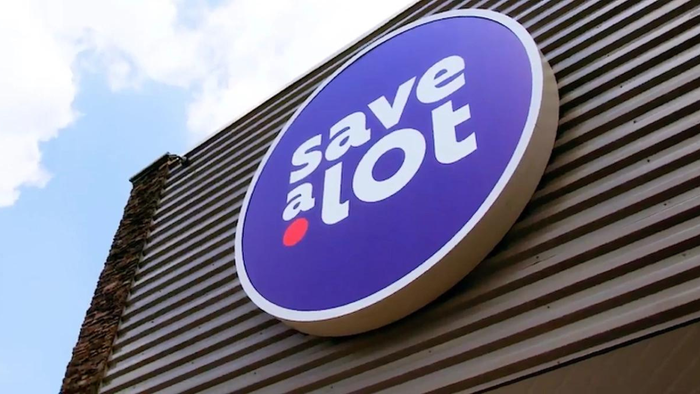Pet project
Mastering the pet category is becoming a priority for grocers as manufacturers offer new products and merchandising strategies to keep customers coming back.
January 1, 2018
Mastering the pet category is becoming a priority for grocers as manufacturers offer new products and merchandising strategies to keep customers coming back. By Nora Caley Just as pets bring joy to their owners’ lives, pet products can bring joy, or at least increased sales, to grocery retailers’ lives. That’s what manufacturers are saying as they prepare for the Global Pet Expo in Orlando at the end of this month. Manufacturers have a number of new items, as well as some ideas on how to energize the pet section in the grocery channel. Pet product sales are flat in grocery, but some product subcategories are performing better than others. According to SymphonyIRI Group, a Chicago-based market research firm, for the 52 weeks ended Dec. 25, dog food sales totaled nearly $3.1 billion, up 1.2%, and sales of cat food totaled $2.1 billion, up 0.2% compared to the same period the previous year. Treats did especially well, with dog biscuit sales totaling $677.3 million, up 6.17%, and cat snacks totaling $179.1 million, an increase of 6.3%. Sales of pet supplies totaled $691.9 million, down 0.9%. Industry experts say certain retailers are seeing robust sales in their pet sections. The successful grocery chains have taken a cue from pet superstores and have revamped their sections. “There are those grocery chains that have figured out how to master the marketing to their pet customers, and understand the value of the department and in turn have seen the financial benefits,” says Leslie Yellin, executive vice president of Multipet International, based in Moonachie, N.J. “They understand the value of rotating their stock. They are learning from PetSmart and Petco.” Yellin adds that pet is like fashion, and retailers need to update the merchandise often to keep consumers’ interest. “It’s not something you reset once a year and walk away,” she says. “The grocery stores that are thriving are doing so because their management is allowing them the time and dedication to maintain the pet category.” That means making room for new products that answer pet owners’ desire for everything from natural to health and wellness to life stage related products. It also means making the pet section more than just a convenience set, says Tina Le Lay, senior director of marketing, dog/cat treats for The Hartz Mountain Corp., based in Secaucus, N.J. “Better organization of the pet aisle, cross category promotion, endcap promotion and floor displays, and features in circulars are just a few ways that the successful grocery retailers have improved sales.” They’ve also improved sales by offering what shoppers want. “Even consumers who are casual shoppers of pet specialty have been influenced, driving higher expectations for more specialized products, growth of wellness and natural products, and of course, greater breadth of offerings,” Le Lay says. Those higher expectations include better quality products, says Darlene Frudakis, president and COO of PetAg, based in Hampshire, Ill. “It seems like there is more willingness to try new and unique items, more pet specialty oriented items,” she says. “Grocery brands are known not to be at the top level of quality but the pricing is economical. The thought now is that consumers are willing to pay more for top quality products.” Still looking to natural Among the top quality offerings are natural products, a trend that continues to be important among more than just upscale shoppers at natural chains. “You see a lot more chains catering to health conscious consumers,” Frudakis says. She adds that these retailers are now offering health and wellness supplements as well as chews such as PetAg’s new Rawhide brand Homestyle Jerky Treats, which are low-fat, low-calorie, high protein and gluten- free. Terry Hannaford, CEO of Omega Paw, based in St. Marys, Ontario, Canada, says the company’s Fitness First dog treats are wheat free and do not contain gluten. “They are doing very well for us, especially in markets where consumers are health conscious, such as California, New York and Boston,” he says. “Also the pumpkin and carrot flavor is good for digestion, which is a major issue for dogs.” Other manufacturers say it is not just natural, but high quality natural items that are doing well in grocery. In this segment, Iams, a brand of Cincinnati-based Procter & Gamble, launched Iams Simple & Natural and Iams Sensitive Naturals foods last fall. “Because of increased willingness on the part of pet parents to do the very best for their four-legged family members, premium/super-premium as a tier is growing in spite of the tough economy,” says Jeffrey Metzner, Iams brand manager. “In contrast, we see the economy tier as down in the past 12 months and we do not expect significant growth out of this segment.” Natural is important in the litter category too, according to Jamie Reynolds, national grocery account manager for Detroit Lakes, Minn.-based Pet Care Systems, manufacturer of Swheat Scoop Natural Wheat cat litter. “Grocers have begun to move toward offering more alternative and natural products, with less emphasis on the category redundancy of clay products, which have historically comprised in excess of 95% of the category offerings,” he says. Reynolds, echoing the other experts, says grocery buyers should pay attention to pet specialty. “Grocers can take a message from the leaders of the pet specific trade and increase the alternative litter offerings they shelve such as wheat, corn and other all natural, biodegradable, renewable resource based offerings, and look further to provide private label offerings of these same environment friendly products,” he says. If pet owners are seeking natural treats and natural cat litter, natural shampoos may also be of interest, says Shay Moeller, product manager for consumer pet for Wahl Clipper. The Sterling, Ill.-based company makes clippers and other grooming tools and recently launched a line of Wahl All Natural shampoos. “We do extremely well in mass, but the biggest hurdle in the food channel is getting past treats and pet food,” he says. “If you look at most grocery stores they don’t even carry brushes and they may carry one shampoo.” Grooming is becoming more important to consumers, he says, as grooming-intensive breeds such as Yorkshire terriers, golden retrievers, poodles, and Shih Tzus become more popular. Moeller says people can spend hundreds of dollars a year on professional grooming and some are beginning to realize they can do much of the work themselves at home. “We’re finding 26% of dog owners will buy clippers,” he says. “Once people get over the initial fear, they know they are not going to hurt their dog.” Getting educated Moeller says Wahl offers a number of ways to educate consumers about grooming, including web videos and on-package instructions. Hannaford agrees that packaging is important. Omega Paw’s Fitness First and Health Bone dog treats are made with quinoa, so the packaging features a photo of the grain to help consumers who are not familiar with the ingredient. “We have to have the best packaging,” he says. “We have to tell a story.” Yellin says packaging can help make the entire pet section look fresh and bright, but what’s equally important is communication between manufacturers and grocery buyers. Buyers should turn to several suppliers for information about the category. Manufacturers can help by talking up the category, not just their offerings. “Even in my own category, I would never tell a buyer only to buy my products,” she says. “There are other great toys out there.” Multipet’s newest toys include Three Stooges plush toys with voice boxes, and Woofie Cushions that make a whoopee cushion-like sound when dogs bite them. Another way to educate the consumer, of course, is through displays. Frudakis says displays not only help make the best of the limited space, but can also help consumers learn more about how to care for their pets. PetAg is promoting a life stage merchandising concept, with off-shelf displays and power wings that provide information on how to care for pets as they age. “We want to make sure people use specific products for different life stages,” she says. The displays can be used seasonally. Spring and summer are popular times for adopting or buying puppies and kittens, while fall is good for displaying information about joint supplements, as October is Senior Pet Wellness Month. Other displays bring attention to environmentally friendly products. Swheat Scoop offers shelf talkers with information about the litter and about its frequent buyer program. Social media also plays a role in educating consumers and in getting the word out about new items such as Hartz’s Angry Birds toys, based on the game. The dog and cat toys have received more than 80,000 “likes” on Hartz’s Facebook page, and the toys are selling well. “The popularity of Angry Birds is unbelievable, across consumers of all ages. The toys have been flying off the shelves,” Le Lay says. Products that don’t meet expectation are called out immediately by the online community, making for short life cycles for products that are not up to par, Le Lay says. As for real birds, Frudakis says grocers are more willing to stock bird items lately because they see opportunity. “Bird sales were on a downward spiral a few years ago because there were issues with importing birds and selling them, but now bird product sales are coming back,” she says. PetAg offers Hawaiian Delight treats and toys in peggable packages shipped in combination packs so that retailers can sell two different SKUs on one peg to save space. Moeller says Wahl offers floor displays, sidekicks mounted to endcaps, and clip strips. These merchandising pieces can add space, and so can clearing out the clutter. “Most people in grocery really don’t need to clear space to add these additional items. What they need to do is eliminate the triple facings of chew toys or rawhide or multiples of treats,” he says.
About the Author
You May Also Like




